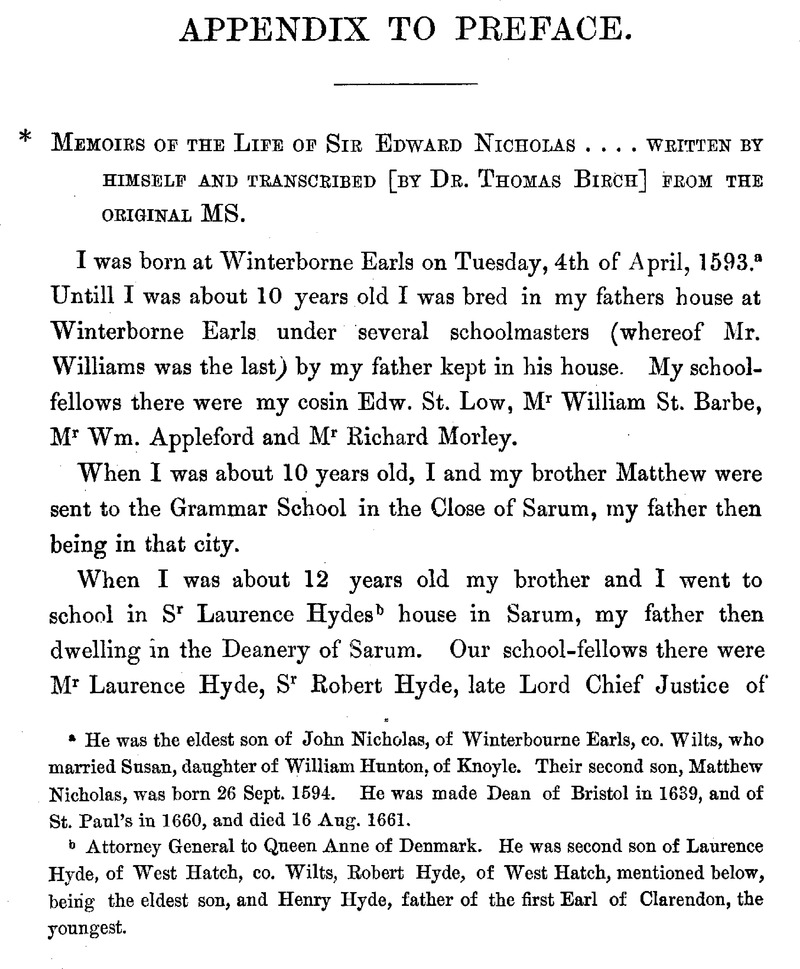No CrossRef data available.
Article contents
Appendix to Preface
Published online by Cambridge University Press: 24 December 2009
Abstract

- Type
- Appendix
- Information
- Copyright
- Copyright © Royal Historical Society 1887
References
page xii note a He was the eldest son of John Nicholas, of Winterbourne Earls, co. Wilts, who married Snsan, daughter of William Hunton, of Knoyle. Their second son, Matthew Nicholas, was born 26 Sept. 1594. He was made Dean of Bristol in 1639, and of St. Paul's in 1660, and died 16 Aug. 1661.
page xii note b Attorney General to Queen Anne of Denmark. He was second son of Laurence Hyde, of West Hatch, co. Wilts, Robert Hyde, of West Hatch, mentioned below, being the eldest son, and Henry Hyde, father of the first Earl of Clarendon, the youngest.
page xiii note a Possibly there is a misreading here, and William Hyde is meant, who was third son of Sir Laurence Hyde, Alexander Hyde being the fourth. As the latter was consecrated Bishop of Salisbury 31 Dec. 1665, and died 22 Aug. 1667, the autobiography must have been written between these dates. Sir Robert Hyde, Chief Justice, died 1 May, 1665.
page xiii note b A misreading probably for “Huntons” (see p. xii. notea).
page xvi note a In Nicholas's memoranda below (p. xviii.) the date is correctly given as 29th Nov.
page xviii note a a These notes are roughly written on a single sheet of paper (Egert. MS. 3558, f. 19), partly in shorthand. The passages omitted, relating to his successive appointments, are substantially incorporated into the preceding autobiography.
page xviii note b Lord Zouche's seat in Hampshire. The accident occurred on 24 July, 1621.
page xviii note c This is recorded in answer to the charges of poisoning the King which were brought against Buckingham and afterwards revived against Charles himself (p. 80, below). See Fuller, Church History, v. p. 568.




